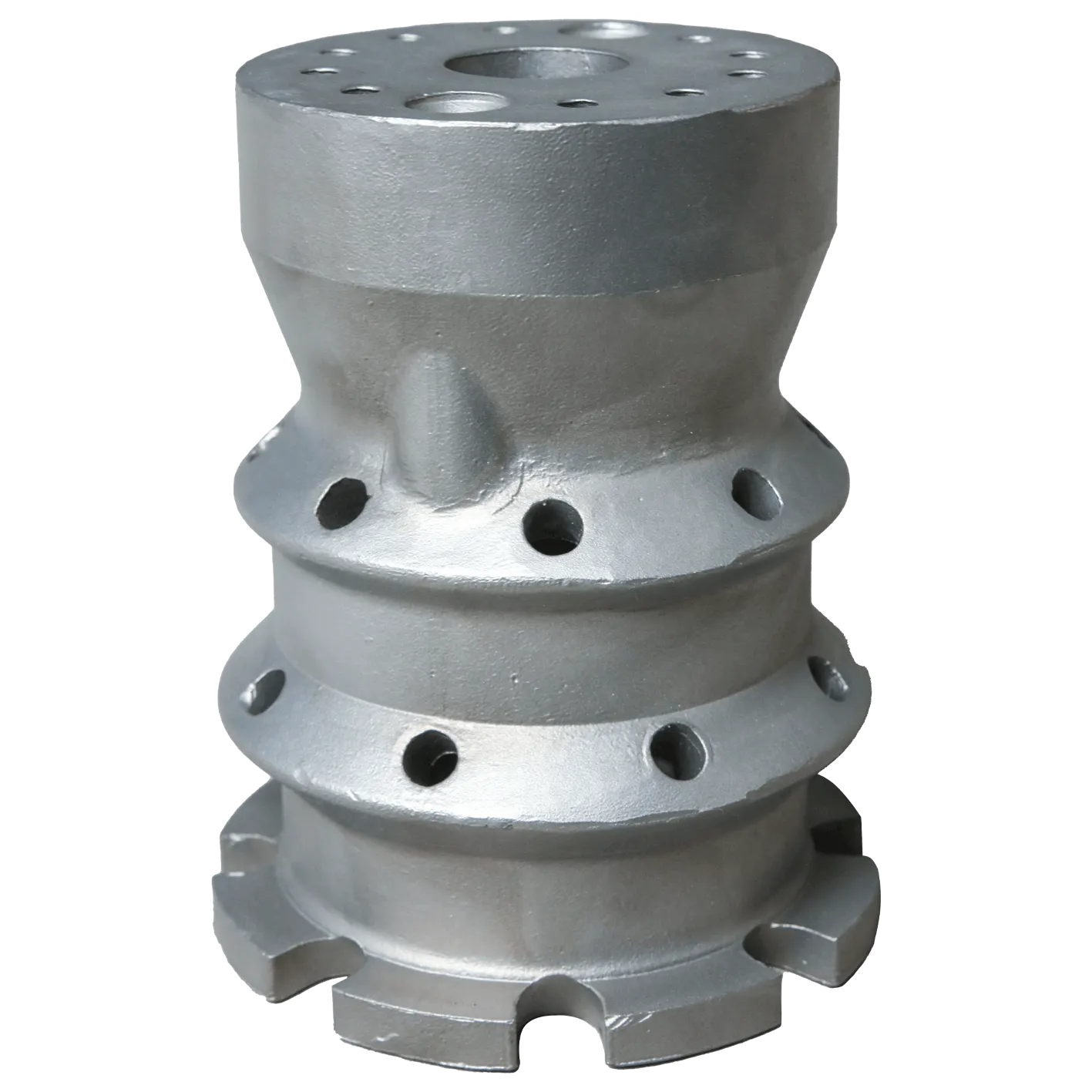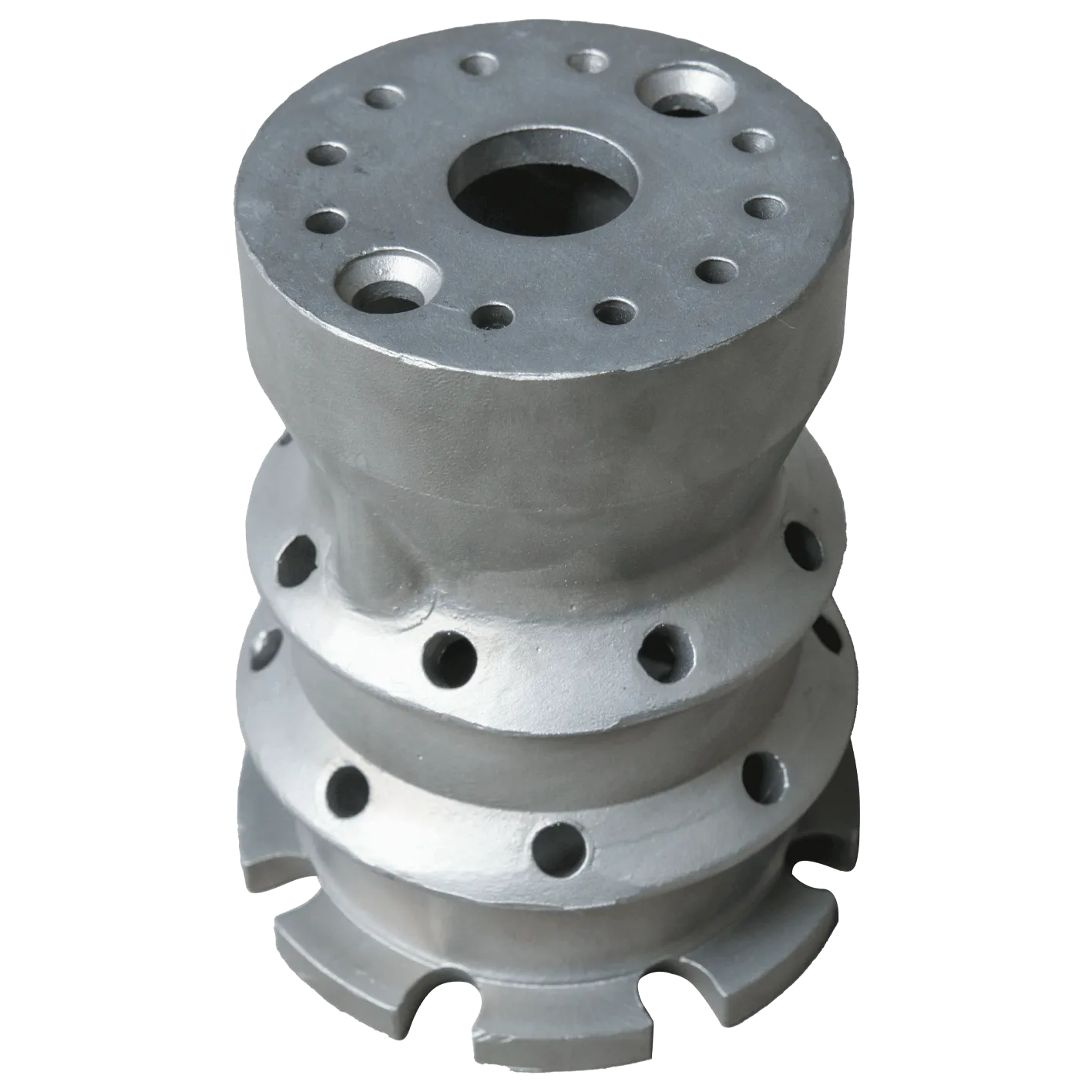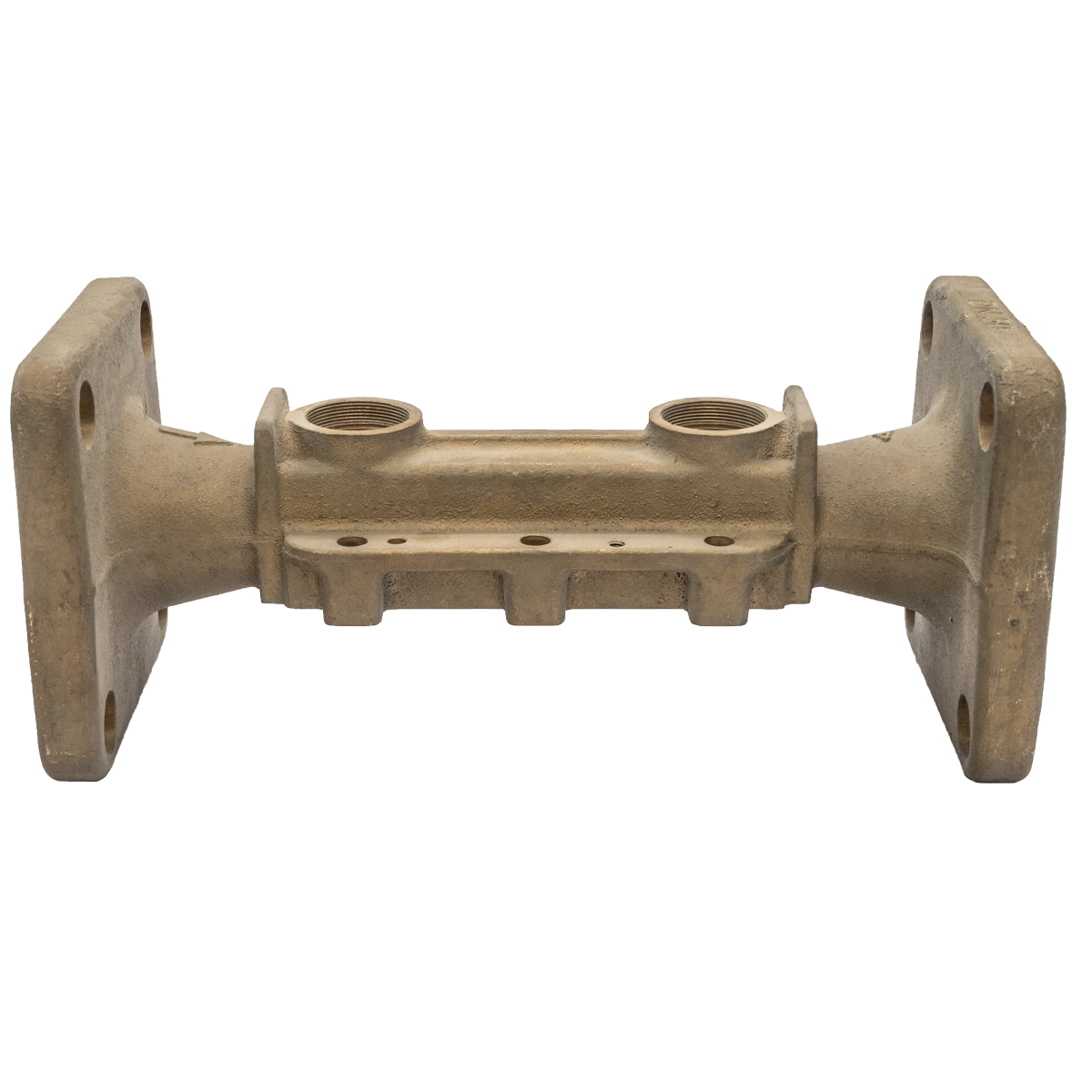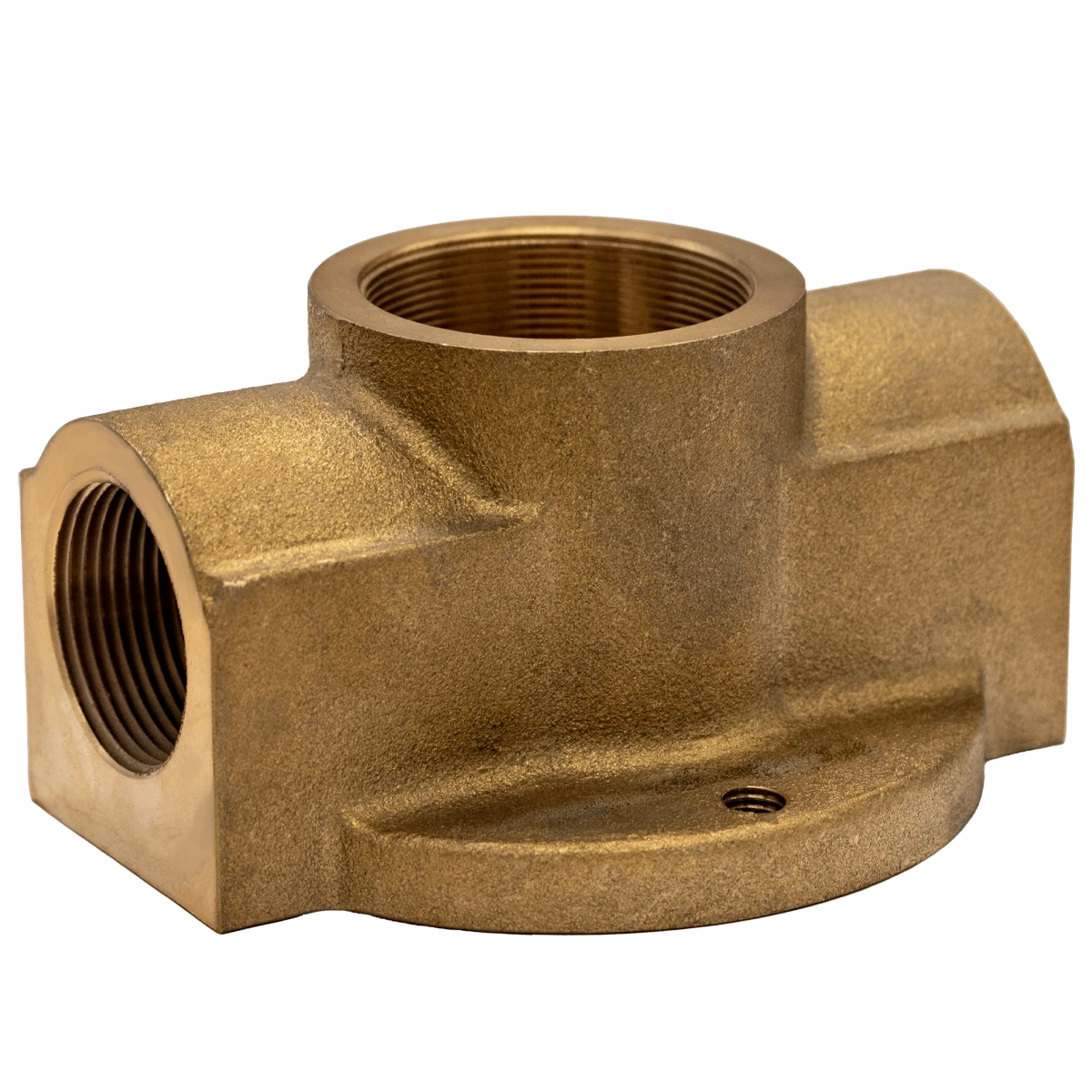Mobile:+86-311-808-126-83
Email:info@ydcastings.com
English
Precision Metal Castings: Aluminum, Stainless Steel & Die Casting
The Strategic Imperative of metal castings in Modern Industry
In the intricate landscape of B2B manufacturing, the choice of component fabrication significantly impacts product performance, cost-efficiency, and supply chain resilience. Among the myriad manufacturing techniques, metal castings stand out as a foundational process, offering unparalleled versatility in producing complex geometries with high material integrity. This detailed exposition delves into the multifaceted world of metal castings, exploring their industry trends, technical specifications, diverse application scenarios, and the critical advantages they confer across sectors like petrochemical, metallurgy, and water supply & drainage. We will also examine the manufacturing intricacies, vendor selection criteria, and the transformative potential of customized solutions, illustrating these points with robust data and real-world case studies.
The demand for precision, durability, and cost-effectiveness drives innovation in casting technologies. From intricate aluminum die casting components for the automotive sector to robust stainless steel castings for corrosive industrial environments, the ability to tailor material properties and design specifics is paramount. Our focus here provides a comprehensive overview designed for B2B decision-makers and engineers seeking to optimize their component sourcing and integrate advanced casting solutions.
Evolving Landscape: Industry Trends in Metal Casting
The metal castings industry is currently undergoing a significant transformation driven by several key trends. Sustainability, automation, and the adoption of advanced materials are reshaping traditional practices.
- Sustainability and Green Practices: There is an increasing emphasis on reducing environmental impact. Foundries are investing in energy-efficient furnaces, recycling casting materials, and adopting processes like green sand metal casting that utilize renewable resources and minimize waste. For example, a 2022 industry report indicated that 45% of North American foundries have implemented or are planning to implement advanced energy recovery systems, leading to an average 15% reduction in energy consumption.
- Automation and Digitization: Industry 4.0 principles are integrating robotics for pouring, finishing, and quality control. IoT sensors monitor critical parameters, enhancing process precision and reducing human error. Simulation software is widely used to optimize mold designs and predict solidification patterns, reducing prototyping costs and lead times.
- Advanced Materials and Alloys: The development of new high-performance alloys (e.g., lightweight aluminum alloys for aerospace, heat-resistant superalloys for power generation) is pushing the boundaries of what metal castings can achieve. This includes specialized stainless steel casting for extreme corrosion resistance and high-strength aluminium metal casting for structural components.
- Additive Manufacturing Integration: While not a replacement, 3D printing is increasingly used for rapid prototyping of patterns, cores, and even direct printing of molds, accelerating the development cycle for complex metal castings.
These trends collectively point towards a future where metal castings are not only more efficient and environmentally friendly but also capable of producing components with unprecedented levels of complexity and performance.
Manufacturing Process: From Design to Delivery
The manufacturing of metal castings is a sophisticated multi-stage process that transforms raw metal into precisely engineered components. Understanding this process is crucial for appreciating the technical advantages and ensuring optimal product selection.
Detailed Process Flow:
- Pattern Making: A pattern, typically made of wood, metal, plastic, or wax, is a replica of the desired casting, slightly oversized to account for metal shrinkage during cooling. For complex aluminium metal casting or aluminum casting die, CAD/CAM software and CNC machining are used for high precision.
- Molding: The pattern is used to create a mold cavity.
- Sand Casting: Green sand metal casting is prevalent, using a mixture of sand, clay, and water. A cope and drag system forms the two halves of the mold around the pattern.
- Die Casting: For high-volume production of aluminum die casting, permanent metal dies are used, where molten metal is injected under high pressure.
- Investment Casting: (Lost Wax Process) A wax pattern is coated with ceramic slurry, creating a shell. The wax is melted out, leaving a ceramic mold ideal for intricate stainless steel casting with excellent surface finish.
- Melting and Pouring: Raw metals (e.g., aluminum alloys like A356, A380; stainless steel grades like 304, 316, Duplex 2205) are melted in furnaces (induction, arc, cupola) to specific temperatures. The molten metal is then carefully poured into the mold cavity, ensuring controlled flow and preventing defects.
- Solidification: The molten metal cools and solidifies within the mold. Proper gating and risering systems are critical to ensure uniform cooling, prevent shrinkage cavities, and achieve desired microstructure and mechanical properties.
- Shakeout and Core Removal: Once solidified, the casting is removed from the mold. For sand molds, this is the "shakeout" process. Cores, if used, are then broken out.
- Fettling and Finishing: Excess metal (gates, risers, flash) is removed, and surfaces are cleaned. This may involve grinding, shot blasting, and other deburring techniques.
- Heat Treatment: Many metal castings undergo heat treatment (e.g., annealing, normalizing, quenching, tempering, solutionizing, aging) to enhance mechanical properties like hardness, strength, ductility, and machinability.
- Machining (Optional): For components requiring high dimensional accuracy or intricate features not achievable by casting alone, subsequent CNC machining is performed. This is common for critical interfaces in industrial pump or valve components, such as a reflux sleeve.
- Quality Control and Testing: Comprehensive testing ensures compliance with specifications. This includes:
- Non-Destructive Testing (NDT): X-ray radiography, ultrasonic testing, magnetic particle inspection, liquid penetrant inspection to detect internal and surface defects.
- Destructive Testing: Tensile strength, yield strength, elongation, hardness (e.g., Brinell, Rockwell), impact testing (Charpy V-notch) to verify mechanical properties.
- Dimensional Inspection: Using CMMs (Coordinate Measuring Machines) for precise geometric verification.
- Material Chemistry Analysis: Spectrography to confirm alloy composition.
- Surface Treatment & Coating (Optional): Depending on the application, castings may receive coatings for enhanced corrosion resistance, wear resistance, or aesthetic appeal.
- Assembly and Packaging: Final assembly of components, followed by appropriate packaging for protection during transit.
Typical Service Life and Target Industries:
The service life of metal castings varies significantly based on material, application, and operating conditions. For high-grade stainless steel casting in non-aggressive environments, components can last 20-50 years. In highly corrosive or erosive environments (e.g., chemical processing), specialized alloys and robust design might yield 5-10 years before maintenance is required. Key target industries include:
- Petrochemical: Valves, pump housings, flanges, pipe fittings, and other components requiring high pressure, temperature, and corrosion resistance.
- Metallurgy: Furnace parts, rolling mill components, crucible liners, and other equipment subjected to extreme heat and wear.
- Water Supply & Drainage: Pump impellers, valve bodies, fittings, and filtration components demanding corrosion resistance and structural integrity.
- Automotive: Engine blocks, transmission cases, brake components, chassis parts (often aluminum die casting).
- Aerospace: Structural airframe components, engine parts (often precision aluminium metal casting).
- General Engineering: Machine bases, gearboxes, electrical enclosures.
In typical application scenarios, especially in petrochemical environments, the advantage of metal castings in enabling energy saving through optimized fluid dynamics (e.g., precisely cast impellers) and superior corrosion resistance (e.g., duplex stainless steel casting for acidic media) is critical. This translates directly to reduced operational costs and extended equipment longevity.
Technical Specifications and Data Visualization
The performance of metal castings is defined by a rigorous set of technical specifications, encompassing material composition, mechanical properties, dimensional tolerances, and surface finish. Below is a representative table for common casting materials, demonstrating the breadth of capabilities.
Typical Metal Casting Material Specifications:
| Material Type | Specific Grade/Alloy | Tensile Strength (MPa) | Yield Strength (MPa) | Elongation (%) | Hardness (HB) | Key Characteristics |
|---|---|---|---|---|---|---|
| Aluminium Casting | A356.0-T6 | 290 | 220 | 8-12 | 70-90 | Excellent castability, good strength-to-weight ratio, heat treatable. Used for aerospace, automotive. |
| Aluminum Die Casting | A380 | 310 | 160 | 2-3 | Good strength, pressure tightness, cost-effective for high volume. Automotive, electrical. | |
| Stainless Steel Casting | CF8M (316) | 485 | 170 | 30-40 | Excellent corrosion resistance (especially pitting), good strength at elevated temperatures. Marine, chemical. | |
| Ductile Iron Casting | 65-45-12 | 450 | 310 | 12 min | 180-250 | High strength, good ductility, shock resistance. Water pipes, automotive components. |
Beyond mechanical properties, critical parameters for metal castings include dimensional accuracy (e.g., +/- 0.5% for sand casting, +/- 0.05% for investment casting), surface finish (Ra values ranging from 3.2 to 12.5 µm depending on process), and internal soundness (as verified by NDT, e.g., ASTM E186 for X-ray acceptance criteria).

Application Scenarios and Technical Advantages
The versatility of metal castings allows for their deployment across a vast spectrum of demanding applications, each leveraging specific technical advantages.
- Petrochemical Industry: Components such as valve bodies, pump impellers, and compressor housings are often produced via stainless steel casting or specialized nickel alloys. Their primary advantage lies in superior corrosion resistance against aggressive media (e.g., sulfuric acid, hydrocarbons) and integrity under high-temperature, high-pressure operations (up to 600°C and 150 bar). This extends service life and minimizes costly downtime.
- Automotive Sector: Aluminum die casting is extensively used for engine blocks, transmission casings, and intricate bracketry. The key advantages are lightweight construction (improving fuel efficiency), excellent heat dissipation, and the ability to produce high volumes of complex, near-net-shape components with tight tolerances, reducing subsequent machining.
- Water Treatment and Municipal Infrastructure: Ductile iron and specialized metal castings are crucial for pumps, gate valves, and pipe fittings in water distribution networks. Advantages include robust structural strength, long service life in submerged environments, and resistance to erosion and cavitation. For instance, pump impellers cast from duplex stainless steel can offer 30% greater cavitation resistance compared to standard cast iron.
- Aerospace and Defense: Precision aluminium metal casting (e.g., A356-T6) and investment-cast superalloys are vital for structural components, engine parts, and hydraulic manifolds. Advantages include exceptional strength-to-weight ratios, ability to create complex internal passages for fluid flow, and high integrity for critical safety components.
Overall, the technical advantages of metal castings can be summarized as:
- Complexity and Design Freedom: Ability to produce highly complex, near-net-shape geometries, often with internal passages, which are difficult or impossible to achieve with other manufacturing methods.
- Material Versatility: Accommodates a wide range of ferrous and non-ferrous alloys, allowing for optimization of properties (e.g., strength, corrosion resistance, wear resistance) for specific applications.
- Cost-Effectiveness: Particularly for high-volume production, casting can be more economical than machining from solid stock, especially for complex parts, due to reduced material waste and machining time.
- Excellent Mechanical Properties: Through controlled solidification and heat treatment, castings can achieve superior mechanical properties, including high strength, ductility, and fatigue resistance.
Vendor Comparison and Customized Solutions
Selecting the right vendor for metal castings is a critical strategic decision. It goes beyond mere cost and involves evaluating expertise, technological capabilities, and a commitment to customized solutions.
Key Considerations for Vendor Comparison:
| Criterion | High-Value Vendor Profile | Risk of Lower-Tier Vendor |
|---|---|---|
| Technical Expertise & Engineering Support | In-house metallurgical engineers, advanced simulation software (e.g., MAGMA), DFM (Design for Manufacturability) collaboration. | Limited design review, reliance on customer's design, lack of optimization for casting process. |
| Quality Certifications & Control | ISO 9001:2015, specific industry certifications (e.g., PED for pressure equipment, AS9100 for aerospace), comprehensive in-house NDT capabilities. | Basic quality checks, outsourcing NDT, inconsistent material traceability. |
| Material Range & Processing Capabilities | Extensive range of ferrous/non-ferrous alloys (including specialized duplex stainless steel casting, heat-resistant alloys), in-house heat treatment, precision machining. | Limited material selection, reliance on external subcontractors for crucial secondary processes. |
| Lead Time & Reliability | Proven track record of on-time delivery, clear communication channels, contingency planning. Average lead time for new tooling: 4-8 weeks; for production: 3-6 weeks. | Frequent delays, poor communication, opaque production schedules. |
| Customization & Partnership Approach | Proactive in offering design optimizations, material recommendations, flexible batch sizes, dedicated project management. | Rigid processes, unwilling to deviate from standard offerings, transactional relationship. |
Customized Solutions in Metal Casting:
True value in metal castings often lies in the ability to provide tailored solutions. This involves:
- Design Optimization: Collaborating with clients to refine CAD models for optimal castability, minimizing material usage, and enhancing performance through techniques like topological optimization.
- Alloy Development: For specialized applications, working with metallurgists to formulate custom alloys that precisely meet specific environmental, mechanical, or thermal requirements.
- Process Tailoring: Selecting the most appropriate casting method (e.g., green sand metal casting for large, less critical parts; investment casting for high precision) and optimizing process parameters to achieve desired properties and cost targets.
- Integrated Manufacturing: Offering end-to-end solutions including casting, heat treatment, CNC machining, assembly, and specialized coatings, reducing supply chain complexity for the client.
A vendor capable of such customization acts as a strategic partner, delivering not just parts, but optimized solutions that contribute directly to the client's competitive advantage.
Application Case Study: Optimizing Reflux Sleeve Performance
One compelling example of engineered metal castings in a demanding industrial setting is the reflux sleeve, a critical component in distillation columns, reactors, and heat exchangers, particularly in petrochemical and chemical processing.
Challenge: A major petrochemical client faced premature failure of their existing reflux sleeves, which were manufactured from conventional stainless steel casting (304L) via sand casting. The failures were primarily due to localized corrosion and erosion-corrosion caused by aggressive, high-temperature condensate flows, leading to frequent maintenance and significant production losses. The original design also suffered from suboptimal fluid dynamics, causing efficiency losses.
Solution Implemented: Our engineering team collaborated with the client, undertaking a comprehensive analysis of the operating conditions, fluid dynamics, and material compatibility. The solution involved:
- Material Upgrade: Transitioned from 304L to a Duplex Stainless Steel (e.g., CD3MN / ASTM A890 Grade 2A) through precision investment stainless steel casting. Duplex alloys offer superior resistance to chloride-induced stress corrosion cracking and pitting, with higher strength, making them ideal for this demanding environment.
- Design Optimization: Utilized CFD (Computational Fluid Dynamics) simulations to re-engineer the internal geometry of the reflux sleeve. This optimized fluid flow, reducing turbulence and localized velocity hotspots, which are major contributors to erosion-corrosion. The complex, optimized internal channels were only achievable through the high precision of investment metal castings.
- Advanced Manufacturing: Employed investment casting for the main body and precision CNC machining for critical sealing surfaces and mounting points. This hybrid approach ensured both complex internal geometry and tight dimensional tolerances (Reflux sleeve).
- Rigorous Testing: Each batch underwent stringent NDT, including liquid penetrant inspection and hydro-testing at 1.5 times the design pressure, complemented by spectrographic analysis for material verification.
Results: The new reflux sleeves exhibited a projected service life increase of over 200% compared to the original components, reducing maintenance cycles from quarterly to annually. The optimized design also contributed to a measured 3-5% improvement in process efficiency, leading to significant energy savings and increased product yield. This demonstrates how sophisticated metal castings can drive substantial operational and economic benefits.

Ensuring Trust and Reliability: Our Commitment
As a leading provider of metal castings, our operations are built on a foundation of trust, transparency, and unwavering commitment to quality. Our adherence to international standards and customer-centric policies ensures peace of mind for our B2B partners.
Authoritative Certifications & Experience:
We operate under stringent quality management systems, holding certifications such as ISO 9001:2015, affirming our commitment to consistent quality. With over 20 years of specialized experience in high-performance metal castings, we have cultivated a reputation for reliability. Our clientele includes recognized leaders in the petrochemical, water treatment, and heavy machinery industries, reflecting our proven capability to meet diverse and stringent requirements. All material test reports (MTRs), dimensional inspection reports, and NDT certificates are provided with each shipment, ensuring full traceability and compliance with industry standards like ASTM, ANSI, and ASME.
Frequently Asked Questions (FAQ):
Q: What is your typical lead time for custom metal castings?
A: For new projects requiring tooling development, lead times typically range from 4-8 weeks for pattern/die creation. Production runs generally follow within 3-6 weeks, depending on material, complexity, and batch size. We offer expedited services for critical projects.
Q: What materials can you cast?
A: We specialize in a wide array of materials including various grades of aluminium metal casting (e.g., A356, A380), stainless steel casting (e.g., 304, 316, Duplex, Super Duplex), carbon steels, alloy steels, and ductile iron. We also support custom alloy development.
Q: What are your quality control procedures?
A: Our quality control integrates in-process checks, spectrographic material analysis, comprehensive dimensional inspection using CMMs, and various NDT methods (PT, MT, UT, RT) performed by certified technicians to ensure compliance with international standards.
Q: Do you offer design assistance?
A: Yes, our experienced engineering team provides full design for manufacturability (DFM) support, assisting clients in optimizing their designs for casting efficiency, cost-effectiveness, and enhanced performance, particularly for complex aluminum casting die or investment casting projects.
Lead Time and Fulfillment:
Our streamlined production process, combined with robust supply chain management, ensures reliable fulfillment. Lead times are precisely communicated at the quoting stage and are continuously tracked with regular updates provided to clients. We leverage a global logistics network to ensure timely and secure delivery of metal castings to your facility, anywhere in the world. For critical components, we can implement consignment inventory programs or buffer stock arrangements to guarantee immediate availability.
Warranty Commitments:
We stand behind the quality of our metal castings with a comprehensive warranty against material defects and workmanship. Specific warranty terms are provided with each quotation and contract, typically covering a period of 12 months from installation or 18 months from shipment, whichever comes first. Our commitment extends to swift resolution of any issues, upholding our reputation for reliability.
Customer Support:
Our dedicated customer support team is available to assist with technical inquiries, order status updates, and post-sales support. Clients have direct access to project managers and engineering specialists to ensure seamless communication and effective problem-solving. We believe in building long-term partnerships through responsive and reliable service.
Conclusion
The domain of metal castings remains a cornerstone of industrial manufacturing, consistently adapting to meet evolving demands for precision, performance, and sustainability. From the foundational principles of green sand metal casting to the high-tech precision of aluminum die casting and advanced stainless steel casting, the industry offers a spectrum of solutions vital for diverse applications. By understanding the intricate process flows, leveraging technical advantages, and partnering with expert vendors, businesses can unlock significant value, enhancing product longevity, operational efficiency, and overall competitiveness. The continued innovation in materials and processes ensures that metal castings will remain at the forefront of engineering solutions for decades to come.
References:
- ASM International, "ASM Handbook, Volume 15: Casting," Materials Park, OH: ASM International, 2008.
- The American Foundry Society (AFS), "Foundry Industry Trends Report 2022," Schaumburg, IL: AFS Publications, 2022.
- Campbell, J. "Complete Casting Handbook: Metal Casting Processes, Metallurgy, Techniques and Design," Butterworth-Heinemann, 2011.
- International Organization for Standardization (ISO), "ISO 9001:2015 Quality management systems – Requirements," Geneva, Switzerland: ISO, 2015.
- ASTM International, "Various standards for metal casting, including ASTM A27/A27M, ASTM A356/A356M, ASTM B108, ASTM B85," West Conshohocken, PA: ASTM International.
-
Materials Used in Manufacturing Cap End Pipe FittingsNewsNov.24,2025
-
Material Properties of CF8M CastingNewsNov.24,2025
-
How to Inspect Pump Cap Ends for DamageNewsNov.21,2025
-
Backward Curved Impeller – Efficient Airflow Solutions for Industry | YD CastingsNewsNov.21,2025
-
Automobile Water Pump - Efficient, Quiet, Durable & ElectricNewsNov.21,2025
-
Impeller for Pumps – High-Efficiency, Durable, OEM-ReadyNewsNov.21,2025











